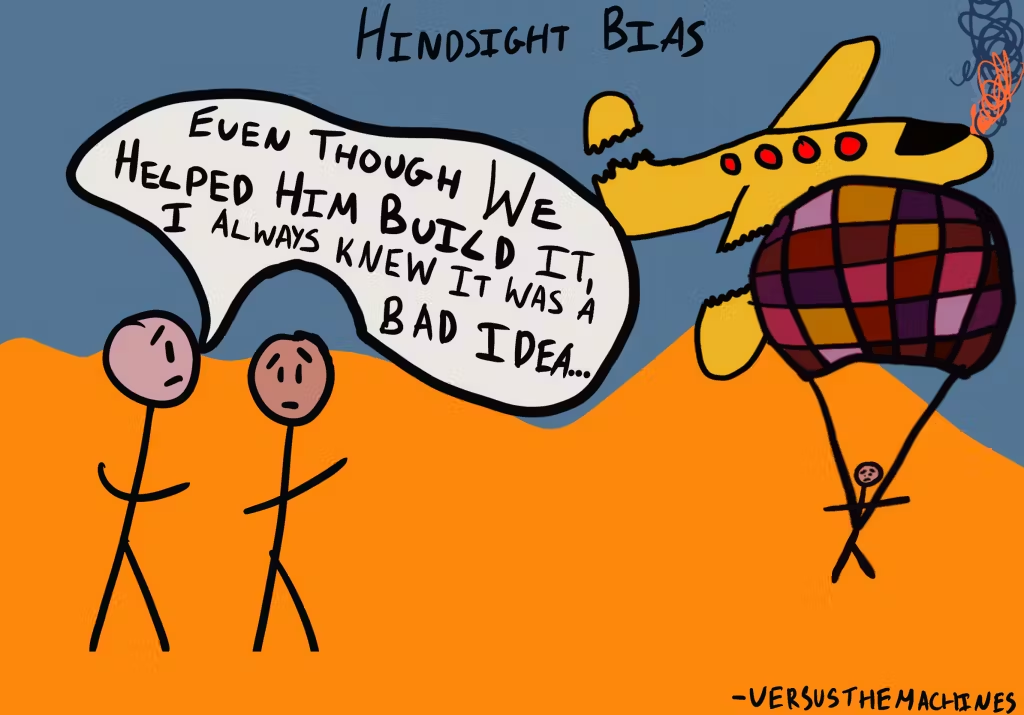Why do unpredictable events only seem predictable after they occur?
Hindsight Bias
, explained.What is the Hindsight Bias?
The hindsight bias describes our tendency to look back at an unpredictable event and think it was easily predictable. Also called the “knew-it-all-along” effect, this bias occurs when our current knowledge of an event’s outcome influences our perception of past decisions or judgements, causing us to overestimate our ability to predict future events.

Where this bias occurs
Consider this hypothetical: John and Jane have a fantastic relationship. They are madly in love and even have plans to move in together in a few months—at least that’s what John thinks.
One day after work, John receives a message from Jane: “We need to talk.” Suddenly, he gets worried. Is everything alright? Does Jane still love him? After all, he did pick up on some tension between them over the last few weeks. When they talk later that day, John learns that Jane is not so happy with the relationship. She needs a break from John.
He knew it! John tells himself and his friends. Now that he looks back at his relationship with Jane, he saw many signs that pointed to trouble: canceled plans, awkwardness, being ignored by her friends, and so forth. He had known it all along, and so this bad news from Jane was actually no surprise to him.
This is the hindsight bias at work. An unforeseen break-up becomes foreseeable to John only after it takes place. He overestimates his ability to have predicted the end of his relationship with Jane once the relationship is suddenly over.














